1937 Wheat Penny Coin Value: How Much Is It Worth?
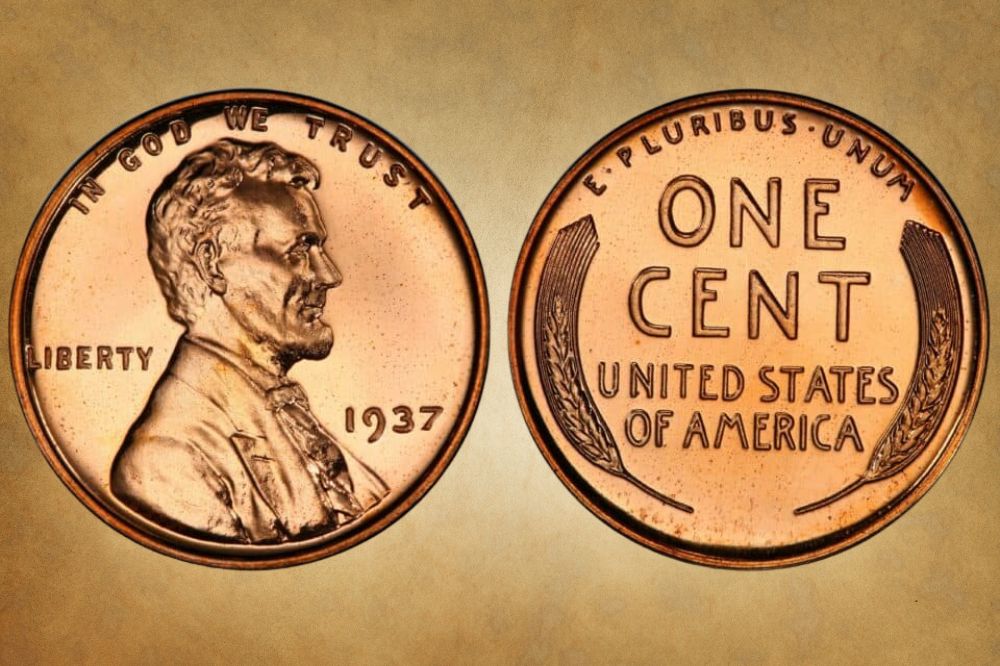
What is a 1937 wheat penny worth? This is probably the question you have in mind after finding a rare Lincoln cent in your pocket change.
Well, the 1937 wheat penny value will depend on the coin’s condition, whether it has a prominent error and its grading.
If all this sounds a bit confusing, don’t worry—I will explain everything you need to know about how much your 1937 wheat penny is.
In this article, I will first explore the coin’s interesting history and unique design; then, we will jump right into the value of the 1937 Lincoln wheat coin and the different varieties and errors that might be worth thousands of dollars.
Let’s get started!
1937 Wheat Penny Value Chart |
||||
| Mint mark | Good | Fine | Extremely Fine | Uncirculated |
| 1937 No Mint mark Wheat Penny Value | $0.15 | $0.25 | $0.85 | $25 |
| 1937 D Wheat Penny Value | $0.15 | $0.25 | $0.85 | $35 |
| 1937 S Wheat Penny Value | $0.15 | $0.35 | $0.85 | $48 |
| 1937 Proof Wheat Penny Value | – | – | – | $8500 |
1937 Wheat Penny Value Guides
All three mint facilities, i.e. Philadelphia, Denver, and San Francisco, produced 349,109,320 1937 Wheat Penny coins.
The mints produced four varieties of these coins, and we will look at each value. The four varieties of the 1937 Lincoln Wheatie are:
- The 1937 No-Mintmark Wheat Penny
- The 1937 Proof Wheat Penny
- The 1937 S Wheat Penny
- The 1937 D Wheat Penny
Let us look at each coin and discover how much is a 1937 Wheat Penny.
1937 No Mint mark Wheat Penny Value
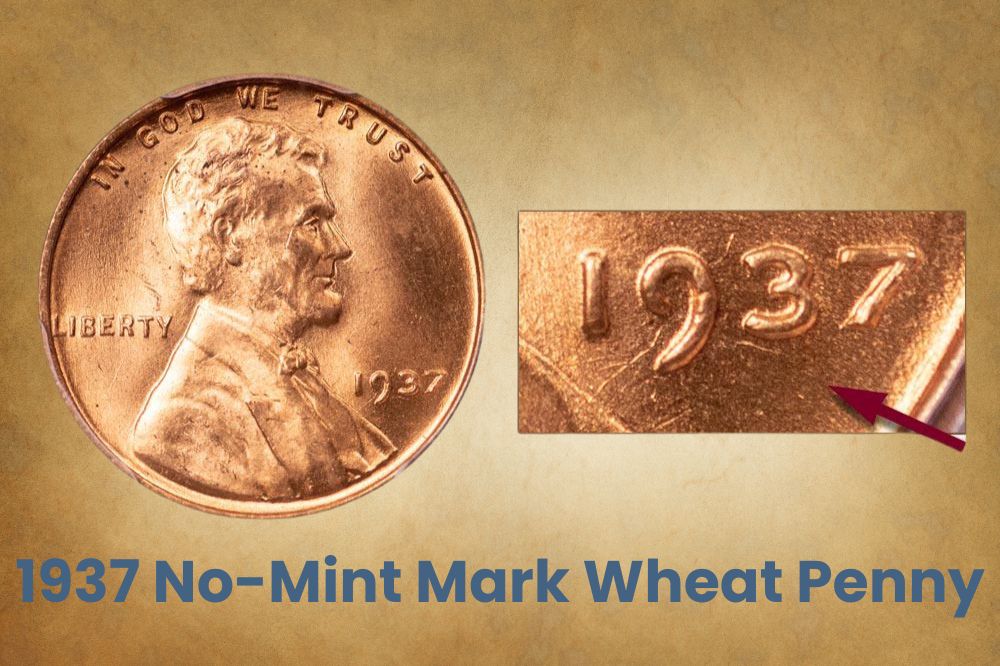
The 1937 Wheat Pennies minted at the Philadelphia facility do not have a mint mark.
A total of 309,170,000 no-mintmark 1937 Lincoln coins were minted, and with such a large mintage, many of these coins are still readily available in circulation.
Due to its ready availability, the no-mintmark 1937 Lincoln cent is worth more or less its face value. In circulated condition, the 1937 Wheat Penny value is between $0.10 and $0.80, depending on the coin’s condition.
The coin is also easily available in uncirculated, mint condition, and any collector can afford it. The 1937 Lincoln Wheatie becomes scarce in higher grades, with only a few hundred examples known in mint state (MS) 66 and MS67. A few examples of MS68 Lincoln Wheat Pennies from 1937 exist.
In mint uncirculated condition, a 1937 no-mintmark Wheat Penny is between $2.25 and $25 at grade MS67.
According to the Professional Coin Grading Service (PCGS), the most valuable 1937 Wheat Penny without a mintmark was sold for $7,200 in MS68 in 2019.
1937 S Wheat Penny Value
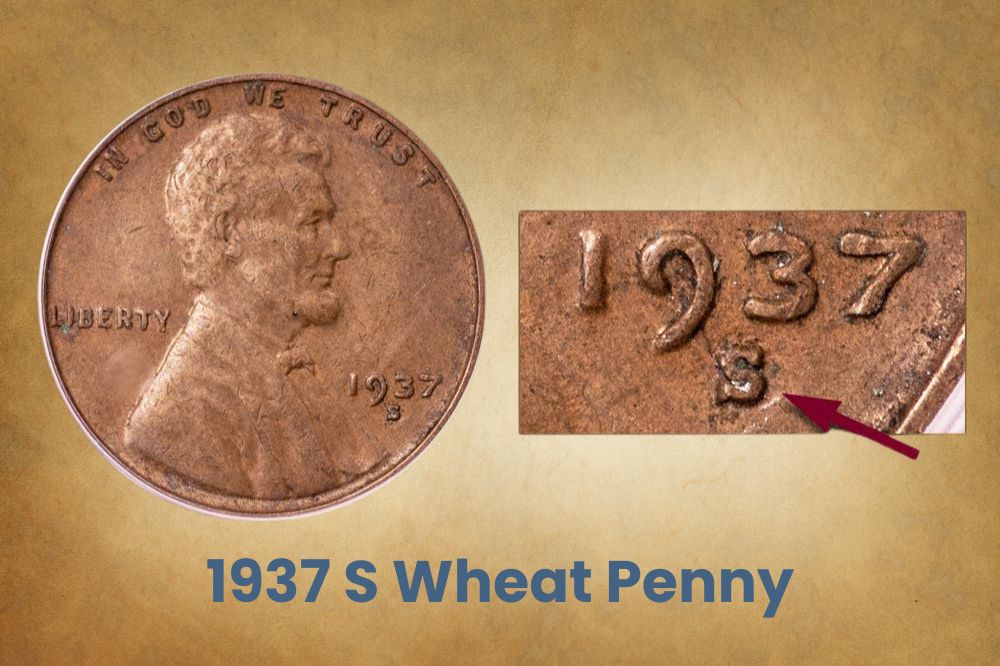
The San Francisco mint produced 34,500,000 Wheat Pennies in 1937. These coins were well-struck with the best quality die presses, and collectors saved rolls of these pennies. It is easy to find 1937 Wheaties in impressively good condition.
The coins made at the San Francisco facility feature an ‘S’ mintmark on the obverse, right underneath the year of production.
In circulated condition, 1937-S Wheat Pennies are worth between $0.10 and $2 depending on the coin’s condition.
There are several thousand examples of 1937-S Wheat Pennies in grades MS66 to MS67, and they are affordable to most collectors. The coin becomes more scarce in higher grades, starting from MS68 and above.
In uncirculated mint state, the 1937 S Wheat Penny value ranges from $3 in MS60 to $48 in MS67. The most valuable 1937 Wheat Penny from San Francisco auctioned at $2350 at MS67 in 2014, according to PCGS records.
1937 D Wheat Penny Value
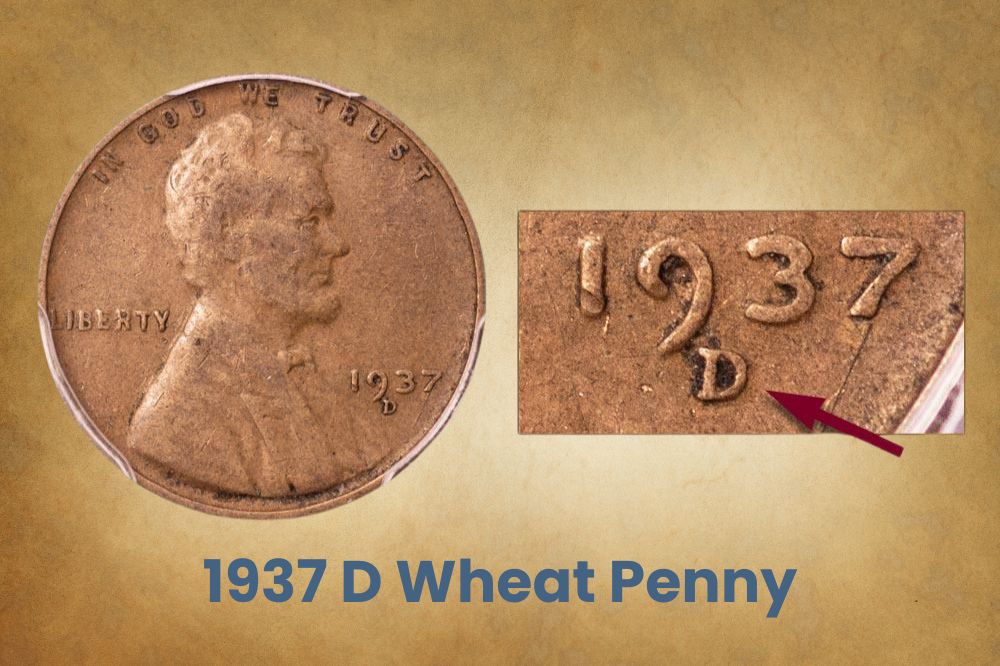
The Denver mint produced 50, 430,000 1937 Wheat Pennies. Like the Philly and San Francisco mints, the Denver facility produced high-quality Wheaties. Many examples are available today, thanks to collectors who hoarded these coins when they were newly minted and released into circulation.
In average circulated condition, the 1937-D Wheat Penny is worth between $0.10 and $1.75, depending on the coin’s condition and extent of wear and tear.
In MS65 and below, these coins are generally easy to find. They are scarce in MS66 to MS67 and difficult to come by in MS68.
In mint, uncirculated condition, the 1937-D Wheat Penny value ranges from $3 at MS60 to $35 at MS67. According to the PCGS, the most valuable 1937-D Wheat Penny was sold at a whopping $17,250 at MS68 in 2006.
1937 Proof Wheat Penny Value
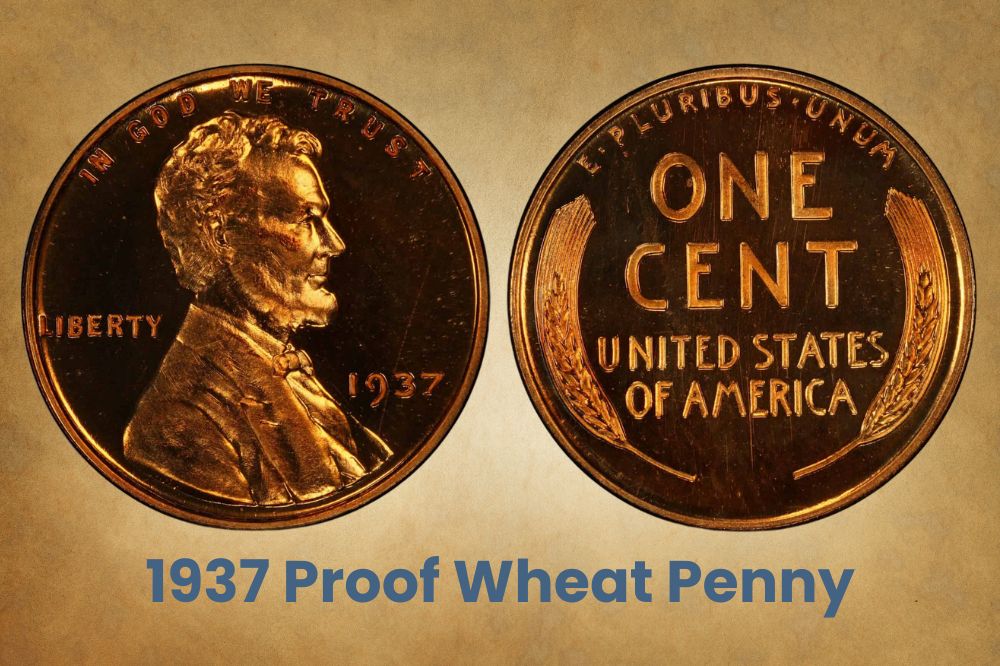
In 1937, the U.S. Mint produced 9,320 Wheat Penny proofs for collectors. These coins were struck multiple times to produce a high-quality, brilliant, and aesthetically appealing coin.
This was the first time the Mint produced a low-mintage Brilliant Proof Lincoln Cent with the 1990 Proof Lincoln series being the other low-mintage coin in the series.
Many examples in PR65 exist, given that the coins were not released into circulation. In higher grades such as PR66 and above, Proof Wheat Pennies from 1937 become increasingly scarce, with less than 300 known examples and less than two dozen examples in PR67.
1937 Proof Wheat Pennies value ranges from $600 in PF63 to $8500 in PF67. The most valuable 1937 Lincoln penny sold for $13,800 at PR68 in 2018.
Related Posts: 16 Most Valuable Wheat Penny Errors
1937 Wheat Penny Errors
Some 1937 Wheat Pennies were released into circulation with noticeable errors and quirks. Knowing the different coin errors in that year can help you identify valuable 1937 wheat pennies.
Let’s take a look at the 1937 Wheat Penny errors you should pay attention to:
1937 Doubled Die Wheat Penny Error
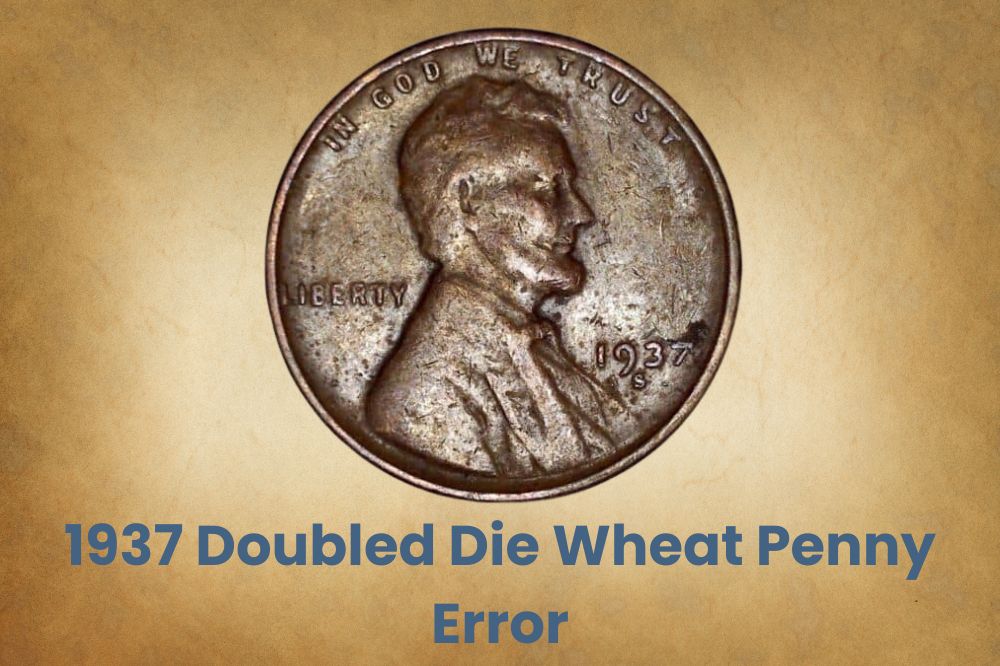
All three mints, i.e. Philadelphia, Denver, and San Francisco, produced doubled die errors. Doubled die errors occur when the hub that imprints the coin’s design onto the die presses the design onto the die twice but at different angles. The die then transfers the double design onto the blank coin, and the coins are minted this way until the error is rectified.
Doubled die error coins are extremely popular among collectors. The three types of 1937 doubled die error coins are the 1937 doubled die penny, the 1937-S doubled die penny, and the 1937-D doubled die penny.
- The 1937 doubled die cent from the Philadelphia mint: This error coin has many variations. But the most notable one shows visible doubling in the words IN GOD WE TRUST and the year of production. These 1937 doubled dies are worth between $10 and $25.
- The 1937-D doubled die penny: This error coin originates from the Denver mint and has different types. The most sought-after among collectors shows doubling in the motto E PLURIBUS UNUM. There is also visible double in the wheat stalks and the denomination. The 1937-D wheat penny error is worth between $5 and $20.
- The 1937-S doubled die wheat penny: This wheat penny from 1937 shows doubling in the words LIBERTY and the motto IN GOD WE TRUST. This error coin may be worth between $10 and $20.
1937 Repunched Mintmark Wheat Penny Error
The repunched mintmark error is a type of doubled die error. In 1937 Wheat Pennies, the error is noticeable on the Denver and San Francisco minted coins, where there is some doubling and sometimes tripling of the D and S mintmarks, respectively.
Repunched mintmark Lincoln pennies are worth about $3, but this value could be more if the doubling is particularly drastic or very easily noticeable.
1937 Off-Center Wheat Penny Error
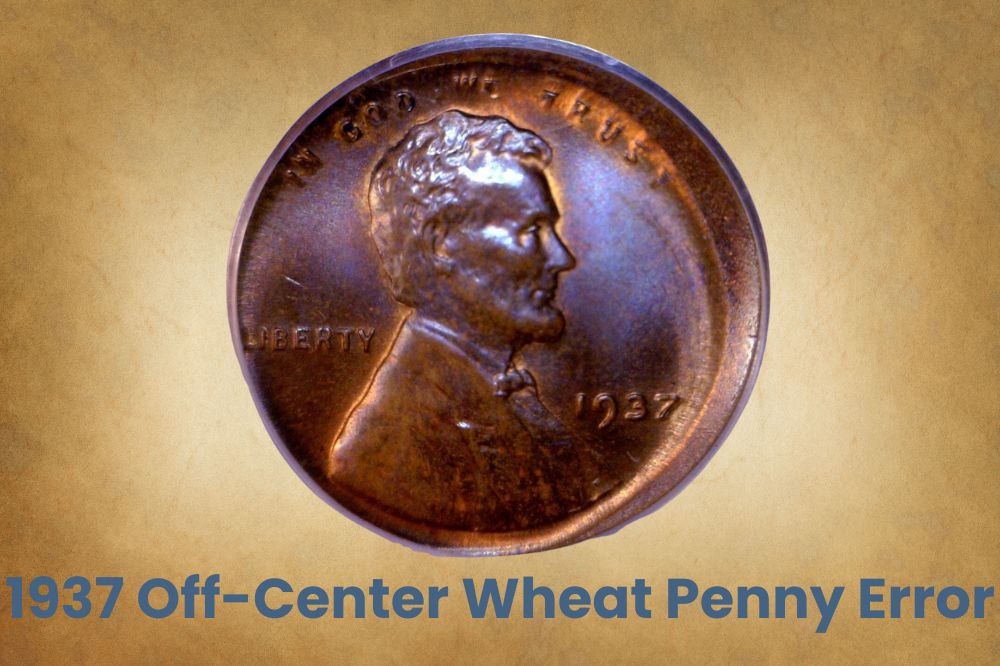
Off-center error coins are the second most popular after doubled dies. The off-center coin occurs when the coin is struck incorrectly or when the die is not centered.
The more-off centered the design, the more valuable the coin would be, as long as the date is visible. 1937 Wheat pennies with a 5 to 10% off-center error can fetch up to $120, while one with a 50% off-center strike with the date intact can be worth $100 or more.
1937 Die Break Wheat Penny Error
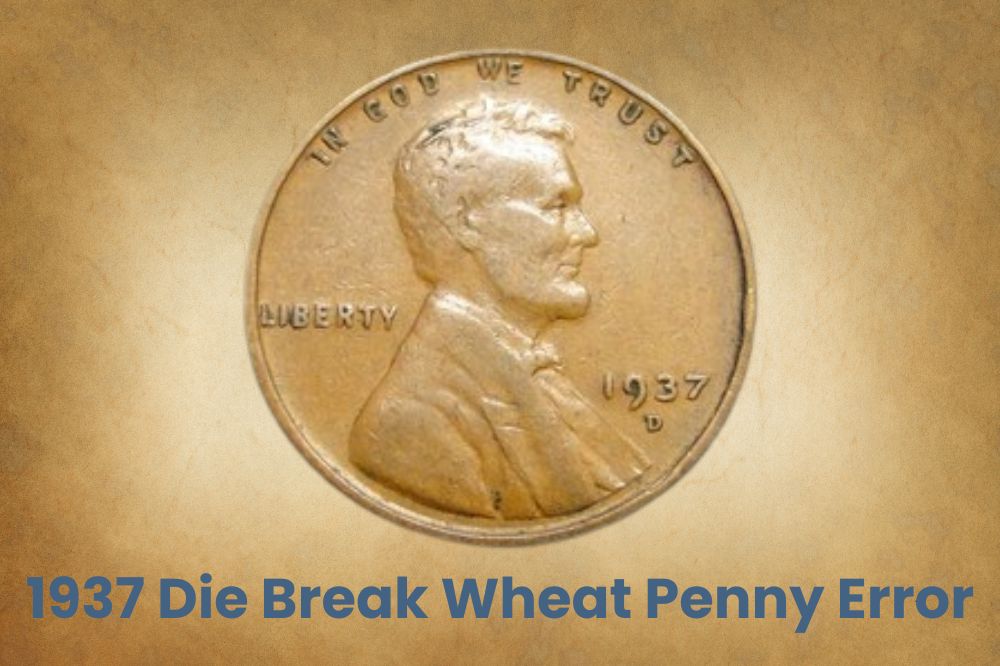
Die breaks are yet another collectible error. This error forms when old or damaged dies imprint the designs on a coin, resulting in raised spots or lines on the obverse or reverse of the coin.
The bigger or more visible the die break, the more valuable the coin. When looking for a worthwhile error coin, you should pay attention to die breaks that drastically alter the coin’s appearance. Such a coin is typically worth between $10 and $25.
BIE 1937 die-break Wheat pennies are worth collecting too. These coins have a small but visible vertical crack between the letters B and E in LIBERTY. BIE Lincoln wheat pennies are worth $5 or more.
Another type of die break is the 1937 Wheat Penny clipped planchet. This coin features a curved or straight line along the edge as though the rim has been cut. Clipped planchet Lincoln Wheaties are worth between $20 and $30.
Related Posts: 19 Most Valuable Lincoln Memorial Penny Worth Money
History Of The 1937 Wheat Penny
The 1937 Wheat Penny belongs to the long-standing Lincoln coin series. There are more than a dozen types of Lincoln coins, but the Wheat Penny is undeniably the most popular among collectors.
The United States Mint first minted the Lincoln Wheat Pennies, also known as Wheaties, in 1909. President Theodore Roosevelt instructed designer Victor D. Brenner to design a coin to commemorate the centennial year of President Abraham Lincoln. The coin became the first national coinage to feature a U.S. President’s portrait, so it was a big deal.
It took many iterations before the U.S. Mint, and the designer could agree on the coin’s final design. Brenner, who had only produced medals before and had never worked on coins, wanted to create a complex coin design. But, the U.S. Mint Engraver Charles Barber wanted a simple, flexible design that would be attractive without wearing the coin.
Ultimately, the Mint and the designer agreed to lower President Lincoln’s torso, allowing his face to point more toward the coin’s center. The resulting design left a lot of space at the top of the coin’s obverse side.
The original design featured Brenner’s initials on the coin’s obverse, but the U.S. Mint rejected this. Brenner iterated and added his three initials on the coin’s reverse instead. Adding all his three initials was different from what earlier designers did by adding only the initials of their last name on the coin.
However, Chief Engraver Barber objected to using the artist’s three initials and asked that they be removed, or only one initial be used. This directive forced the U.S. Mint to remake the reverse dies, removing Brenner’s three initials.
Some Wheat Pennies with Brenner’s three initials had already been minted and released into circulation. This hitch resulted in 1909-S coins with the initials VDB on the reverse. Only a few of these coins were released into circulation, making the 1909-S VDB Wheat Pennies quite rare.
Over the years, Lincoln penny’s composition has changed severally. When the coin was first minted in 1909, it primarily contained copper and stayed this way until 1981. In 1982, the world was plunged into a copper crisis prompting the U.S. Mint to produce coins made from zinc, which was considerably cheaper than copper, silver, and steel.
Related Posts: 19 Most Valuable Wheat Penny Worth Money
How to Identify 1937 Wheat Penny?
Let’s now look at the unique features of the 1937 Wheat Penny.
The Obverse of the 1937 Wheat Penny
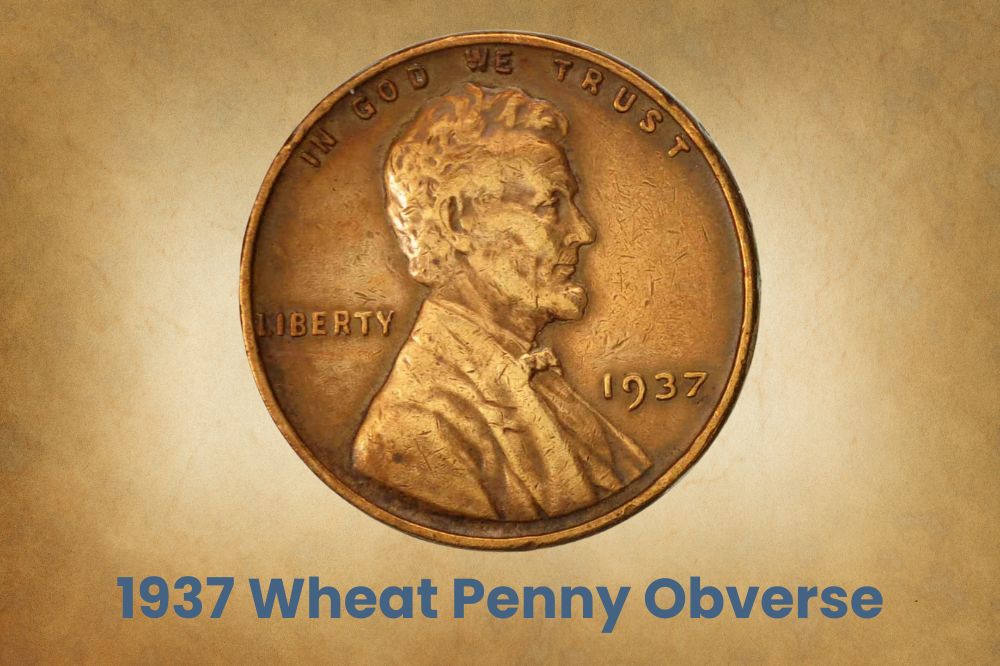
The obverse, also known as heads, is the top-facing side of a coin. The obverse of the 1937 Wheat Penny features the right-facing portrait of the first president of the United States, Abraham Lincoln. The President wears a tuxedo accessorized by a bow tie.
The word LIBERTY appears on the left side of the coin’s obverse, right behind Lincoln’s back. To the right is the coin’s year of manufacture, 1937, placed horizontally and adjacent to the President’s chest.
Around the top of the coin are the words, IN GOD WE TRUST.
The Reverse of the 1937 Wheat Penny
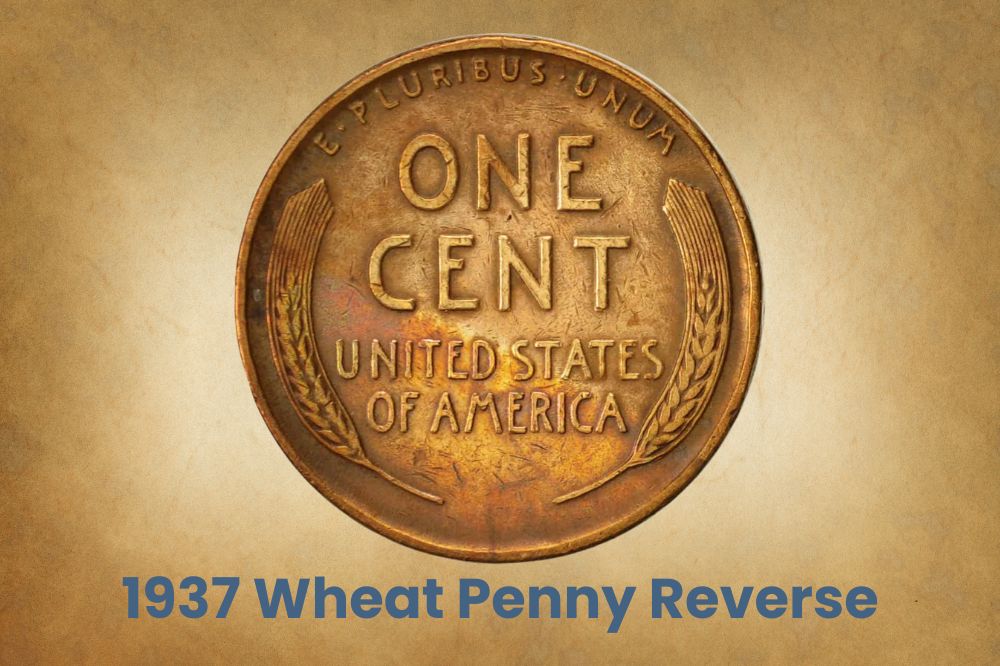
The reverse, also known as the tails, is the coin’s back side. The reverse of the 1937 Wheat Penny coin features the words ONE CENT imprinted at the center of the coin in larger font size.
Right underneath the coin’s denomination are the words UNITED STATES OF AMERICA, taking up two lines horizontally across the coin.
Around the top of the coin is the motto: E PLURIBUS UNUM.
On each side of the coin’s reverse is a wheat stalk, from where the coin’s name comes.
Other Features of The 1937 Wheat Penny
The 1937 Wheat Penny is composed of 95% copper and a 5% zinc-tin alloy.
The Wheat Penny weighs 3.11 grams and has a diameter of 19mm. This coin comes with a smooth edge instead of a reeded one.
The coin appears reddish brown due to its high copper composition
FAQ
Here are answers to a few common questions collectors ask about the 1937 Wheat Penny value
Are 1937 pennies rare?
The U.S. Mint minted 394,109,320 coins, which is definitely a high mintage. Because so many of these coins were produced and released into circulation, it is not unusual to come across 1937 pennies in your everyday pocket change. Even though 1937 Lincoln pennies were made with a high amount of copper, these coins are generally worth their face value in average circulating condition and slightly more in mint condition.
How much are 1937 VDB coins worth?
The 1937 DVB pennies feature the coin designer’s initials. Victor David Brenner imprinted his initials, VDB, on the reverse of the Lincoln pennies, but the U.S. Mint and some lawmakers objected and asked that the coin be redesigned.
Several coins featuring the VDB initials were minted and released into circulation before the redesign, which saw the designer’s initials removed.
However, in 1918, the U.S. Mint restored Brenner’s initials on the obverse, making the font smaller. All Lincoln pennies minted in 1918 going forward, including the 1937 Wheat cents, feature the VDB initials.
1937 VDB coins are not special, rare coins; they are just ordinary 1937 Wheat Pennies worth face value in general circulation.
How do you tell if a 1937 Penny Is a Proof?
While regular coins are struck once, proof coins are struck at least twice. The extra striking gives proof coins a shinier, cleaner, high-quality presentation. You can identify a 1937 Wheat Penny proof by its mirror-like appearance and a silkier feel than the regular coin.
